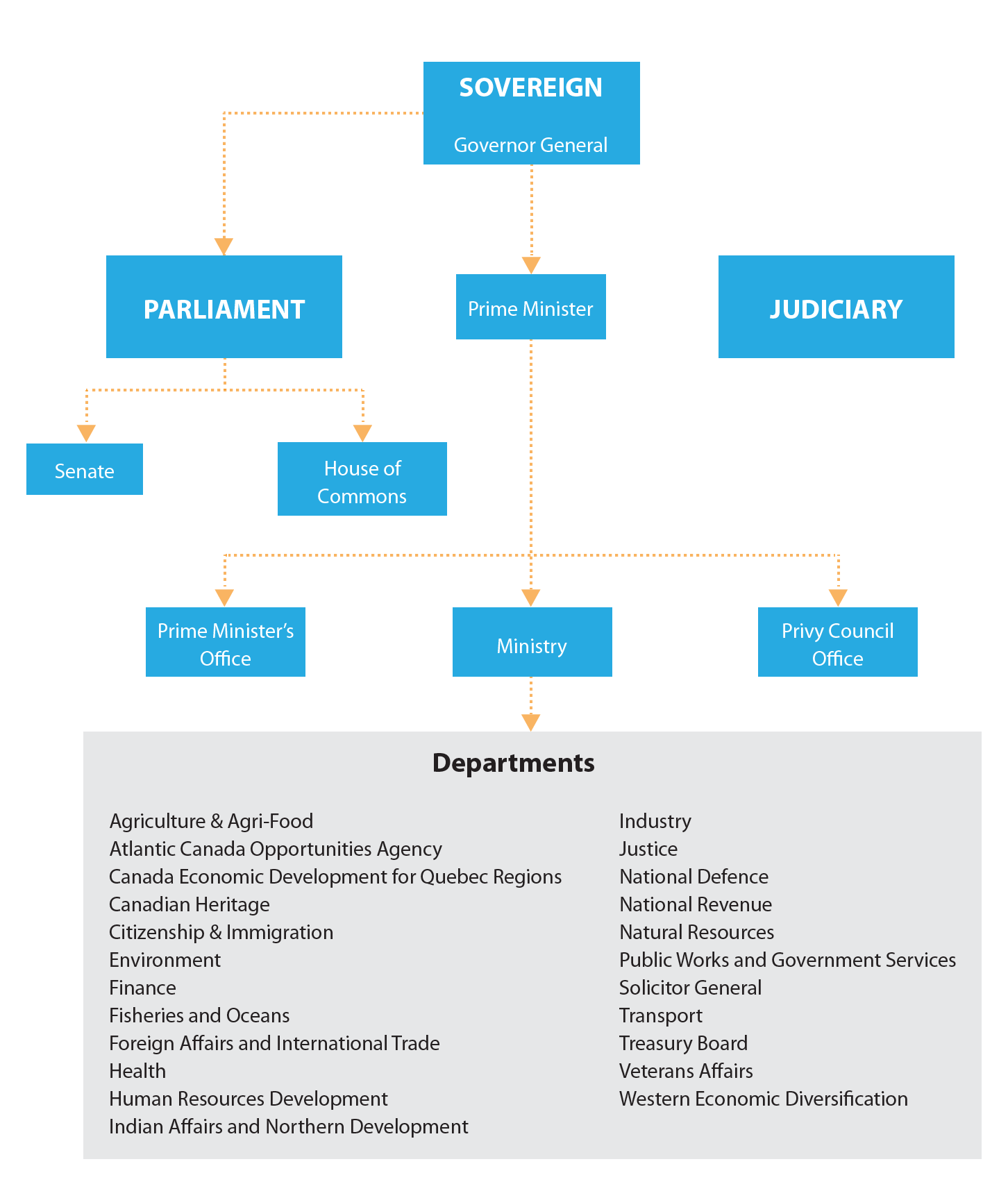Chapter 9: Executing Strategy through Organizational Design
Conclusion
This chapter has explained elements of organizational design that are vital for executing strategy. Leaders of firms, ranging from the smallest sole proprietorship to the largest global corporation, must make decisions about the delegation of authority and responsibility when organizing activities within their firms. Deciding how to best divide labor to increase efficiency and effectiveness is often the starting point for more complex decisions that lead to the creation of formal organizational charts. While small businesses rarely create organization charts, firms that embrace functional, multidivisional, and matrix structures often have reporting relationships with considerable complexity. To execute strategy effectively, managers also depend on the skillful use of organizational control systems that involve output, behavioural , and clan controls. Although introducing more efficient business practices to improve organizational functioning is desirable, executives should avoid letting their firms become “out of control” by being skeptical of management fads. Finally, the legal form a business takes is an important decision with implications for a firm’s organizational structure.
Exercises
- The following chart is an organizational chart for the Canadian federal government. What type of the four structures mentioned in this chapter best fits what you see in this chart?
- How does this structure explain why the government seems to move at an incredibly slow pace?
- What changes could be made to speed up the government? Would they be beneficial?

Attributions
Figure 9.2:
Lost Shoe by Gabriel Lascu (https://www.flickr.com/photos/iahohai/6291137872/) used under CC BY 2.0 Licence (first);
Organizational chart panera by Joea6432 (http://commons.wikimedia.org/wiki/File:Organizational_chart_panera.jpg) used under CC BY-SA 3.0 Licence (second);
Businessmen shaking hands by reynermedia (https://www.flickr.com/photos/89228431@N06/11220931254/) used under CC BY 2.0 Licence(third);
Categorisation-hierarchy-top2down by Andreas Plank (http://commons.wikimedia.org/wiki/File:Categorisation-hierarchy-top2down.svg) used under CC BY-SA 3.0 Licence (fourth)
Figure 9.7:
1974 Canadian Penny (Reverse) by yaybiscuits123 (https://www.flickr.com/photos/33755808@N08/3429469823/) used under CC BY 2.0 Licence (first);
Tattoo arms by Laughlin Elkind (http://commons.wikimedia.org/wiki/File:Tattoo_arms.jpg) used under CC BY 2.0 Licence(second);
(Three elevations of) ceiling panel A, door hall to kitchen dept, north, east (elevations), section looking north (GGUSC-BlackerR-5354) by Unknown (http://commons.wikimedia.org/wiki/File:(Three_elevations_of)_ceiling_panel_A,_door_hall_to_kitchen_dept,_north,_east_(elevations),_section_looking_north_(GGUSC-BlackerR-5354).jpg) is in the Public Domain (third);
LGH PEUKALOISET by Jukka Sirviö (http://commons.wikimedia.org/wiki/File:LGH_PEUKALOISET.jpg) is in the Public Domain (fourth);
Peerless Laundry & Dry Cleaning by Steve Snodgrass (https://www.flickr.com/photos/stevensnodgrass/6616273185/) used under CC BY 2.0 Licence (fifth);
Yoga 23 by Oleg Klementiev (https://www.flickr.com/photos/impuls-f/3947686324/) used under CC BY 2.0 Licence (sixth);
A guitar ubt by Tsca (http://commons.wikimedia.org/wiki/File:A_guitar_ubt.jpeg) is in the Public Domain (seventh);
The Bride: Michelle by Tony Alter (https://www.flickr.com/photos/78428166@N00/5892873450/) used under CC BY 2.0 Licence (eighth)
Figure 9.9:
Safeway (5115784317) by tales of a wandering youkai (http://commons.wikimedia.org/wiki/File:Safeway_(5115784317).jpg) used under CC BY 2.0 Licence (first);
Spa interiors by Avilash behera (http://commons.wikimedia.org/wiki/File:Spa_interiors.jpg) used under CC BY-SA 3.0 Licence (second)
Figure 9.16:
Couples in Real Estate Agent’s Office by Mark Moz (https://www.flickr.com/photos/106574022@N04/10797567855/) used under CC BY 2.0 Licence (first);
FAIL by amboo who? (https://www.flickr.com/photos/amboo213/4020584983/) used under CC BY-SA 3.0 Licence (second);
Shake It, Start Over by Rex Sorgatz (http://www.flickr.com/photos/fimoculous/3210330182/) used under CC BY 2.0 Licence (third);
just the ones I’m getting rid of by Logan Ingalls (https://www.flickr.com/photos/plutor/134329177/) used under CC BY 2.0 Licence (fourth);
Waiter_01 by Beatrice Murch (http://commons.wikimedia.org/wiki/File:Waiter_01.jpg) used under CC BY-SA 3.0 Licence (fifth)
Figure 9.18:
Green flip flops on red background by Steve Johnson (http://commons.wikimedia.org/wiki/File:Green_flip_flops_on_red_background.jpg) used under CC BY 2.0 Licence (first);
Casual Friday Victory by Morgan (https://www.flickr.com/photos/meddygarnet/4409732265/) used under CC BY 2.0 Licence (second);
Google Cheque epayservice by J Archer (http://commons.wikimedia.org/wiki/File:Google_Cheque_epayservice.jpg) used under CC BY 2.0 Licence (third);
perfect attendance by J E Theriot (https://www.flickr.com/photos/jetheriot/8413883357/) used under CC BY 2.0 Licence (fourth);
No Smoking by AIGA (http://commons.wikimedia.org/wiki/File:No_Smoking.svg) is in the Public Domain (fifth)
Figure 9.20:
“Magic” by Frank Kovalchek (http://www.flickr.com/photos/72213316@N00/5613296254/) used under CC BY 2.0 Licence (first);
E by Roddy Keetch (https://www.flickr.com/photos/rkeetch/2736503731/) used under CC BY 2.0 Licence (second);
The Cairn UBC by Xicotencatl (http://commons.wikimedia.org/wiki/File:The_Cairn_UBC.jpg) used under CC BY-SA 3.0 Licence (third)
Figure 9.22:
2006-02-04 Metal spiral by Roger McLassus (http://commons.wikimedia.org/wiki/File:2006-02-04_Metal_spiral.jpg) used under CC BY-SA 3.0 Licence (first);
People in small discussion group meeting by Harless Todd (http://commons.wikimedia.org/wiki/File:People_in_small_discussion_group_meeting.jpg) is in the Public Domain (second);
Cubo completato by Masakazu “Matto” Matsumoto (http://commons.wikimedia.org/wiki/File:Cubo_completato.jpg) used under CC BY 2.0 Licence (third);
WestJet 737-700 (2849416111) by RAF-YYC (http://commons.wikimedia.org/wiki/File:WestJet_737-700_(2849416111).jpg) used under CC BY-SA 3.0 Licence (fourth)
Figure 9.24:
Small Businesses – geograph.org.uk – 682645 by Mary and Angus Hogg (http://commons.wikimedia.org/wiki/File:Small_Businesses_-_geograph.org.uk_-_682645.jpg) used under CC BY-SA 3.0 Licence (first);
Handshake – 2 men by Flazingo Photos (https://www.flickr.com/photos/124247024@N07/13903385550/) used under CC BY-SA 3.0 Licence (second);
Wall Street & Broadway by Fletcher6 (http://commons.wikimedia.org/wiki/File:Wall_Street_%26_Broadway.JPG) used under CC BY-SA 3.0 Licence (third);
Analisis Planta teatro de San Bernardo2 by Lycant (http://commons.wikimedia.org/wiki/File:Analisis_Planta_teatro_de_San_Bernardo2.jpg) used under CC BY-SA 3.0 Licence (fourth)
Image descriptions
Figure 9.25 image description: Organizational Chart for the Federal Government of Canada
Under the sovereign of Canada which is Queen Elizabeth II, and the Governor General, there is the parliament and the Prime Minister. The parliament has two part: the House of Commons and the Senate. Under the Prime Minister, there is the Prime Minister’s office, the ministry, and the Privy Council’s office. The ministry includes 23 departments: Agriculture & Agri-Food, Atlantic Canada Opportunities Agency, Canada Economic Development for Quebec Regions, Canadian Heritage, Citizenship & Immigration, Environment, Finance, Fisheries and Oceans, Foreign Affairs and International Trade, Health, Human Resources Development, Indian Affairs and Northern Development, Industry, Justice, National Defence, National Revenue, Natural Resources, Public Works and Government Services, Solicitor General, Transport, Treasury Board, Veterans Affairs, Western Economic Diversification. And the judiciary is separated from the the sovereign.

